What is an AC Sprain?
AC Joint Sprain
3D Surgical Animation
The shoulder complex is a ball and socket joint and is comprised of 4 main muscles, several bones and several soft tissue structures. The scapula (shoulder blade), clavicle (collar bone), and humerus (upper arm bone) make up the bony components. The upper portion of your shoulder creates a joint between the clavicle and scapula called your AC joint – acromioclavicular.
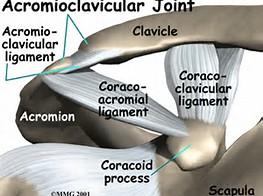
A separation or sprain of the acromioclavicular joint can be a significant injury. The most common injury to this area is a direct fall onto the top of the shoulder. It can also occur from falling onto an outstretched arm, from a direct blow such as in football tackling. When there is a great enough force to this joint, the ligaments that stabilize it, tear causing a separation. Mild tears are treated conservatively, but significant damage that causes winging or elevation of the joint will require surgery called a weaver-dunn procedure.
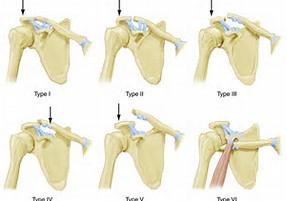
Symptoms
Symptoms from the injury will range from mild to severe pending the classification grade. These include decreased shoulder range of motion, shoulder and cervical spasms, swelling, discoloration, tenderness at the injured site and deformity.
Diagnosis
Diagnosis will be determined through a thorough history and physical examination by a trained sports medicine and orthopedic shoulder specialist. Examination will consist of palpating the shoulder complex for pain and a visual examination for deformities. The clinician will check both active and passive range of motion and utilize specific manual tests to determine if additional conditions exist. X-rays of the shoulder complex will be ordered to determine the severity and to evaluate the deformity if any exists. Once the initial diagnosis has been made, an MRI (3 dimensional picture) may be ordered to further assist in a complete diagnosis.
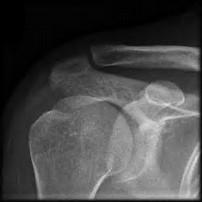
Normal AC Joint
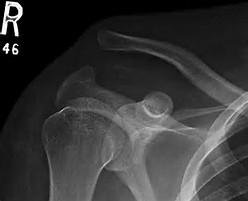
Severe AC Joint Sprain
Treatments and Rehabiliation
Treatments and rehabilitation for mild sprains or separations grade I or grade II are treated conservatively. Conservative management consists of possible immobilization in a sling, anti-inflammatory medications, a cortisone injection, orthobiologics, physical therapy and/or rest. Usually those with a grade I recover in 2-3 weeks, grade II in 4-8 weeks and Grade III in 8-12 weeks. However, if additional etiology exists with a grade III injury such as a throwing athlete, contact athlete or laborer performing repetitive overhead tasks then surgery may be recommended to provide added stability and better outcomes when returning to functional tasks/activities.
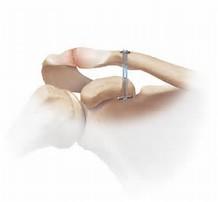
Surgical management of grades III to grade VI consists of reconstruction of the (AC) acromioclavicular ligament and or the (CC) coracoclavicular ligament. This procedure is called a Weaver-Dunn and is an open procedure. If the injury is acute, within 8 weeks, a loop fixation devise is used to retighten the joint allowing your native AC and CC ligaments to heal. If a chronic injury, after 8 weeks then the loop devise is augmented with a cadaver ligament reconstructing your AC and CC ligaments. Surgical recovery to return to normal functional tasks and activities ranges from 6-8 months.
